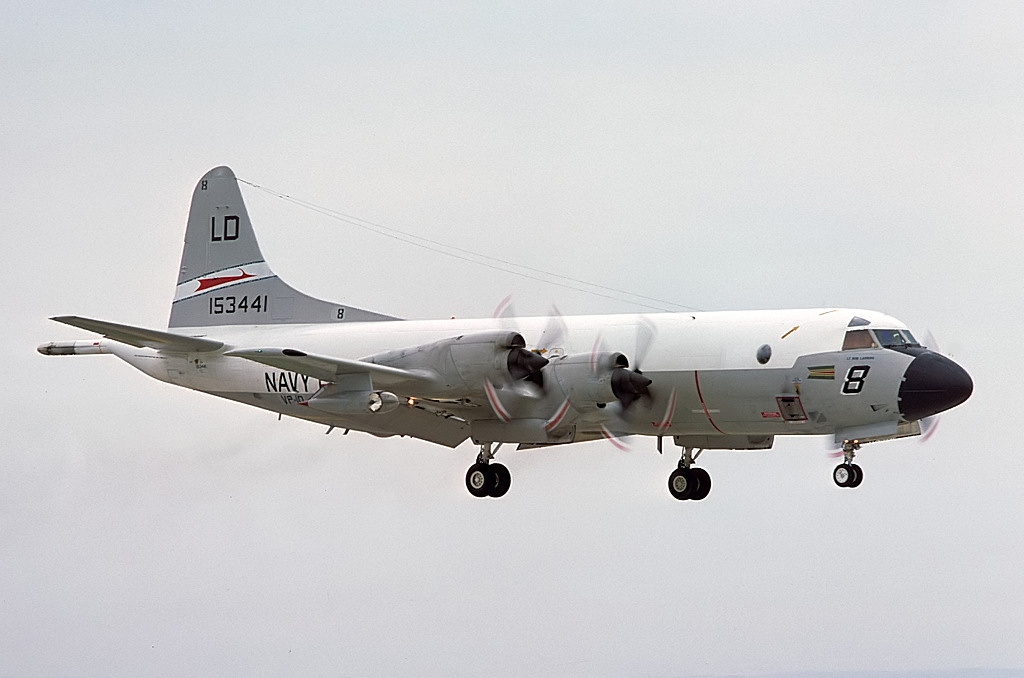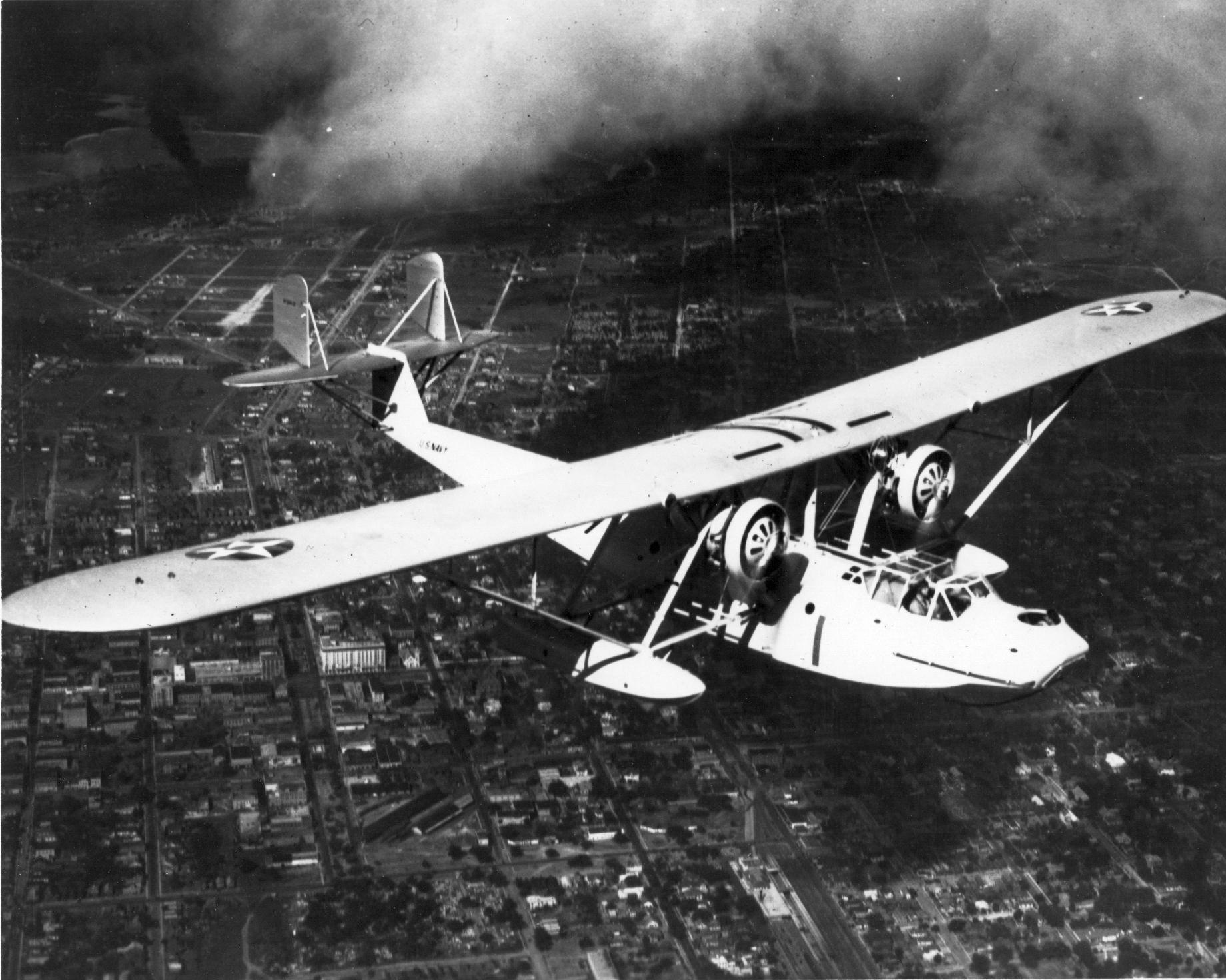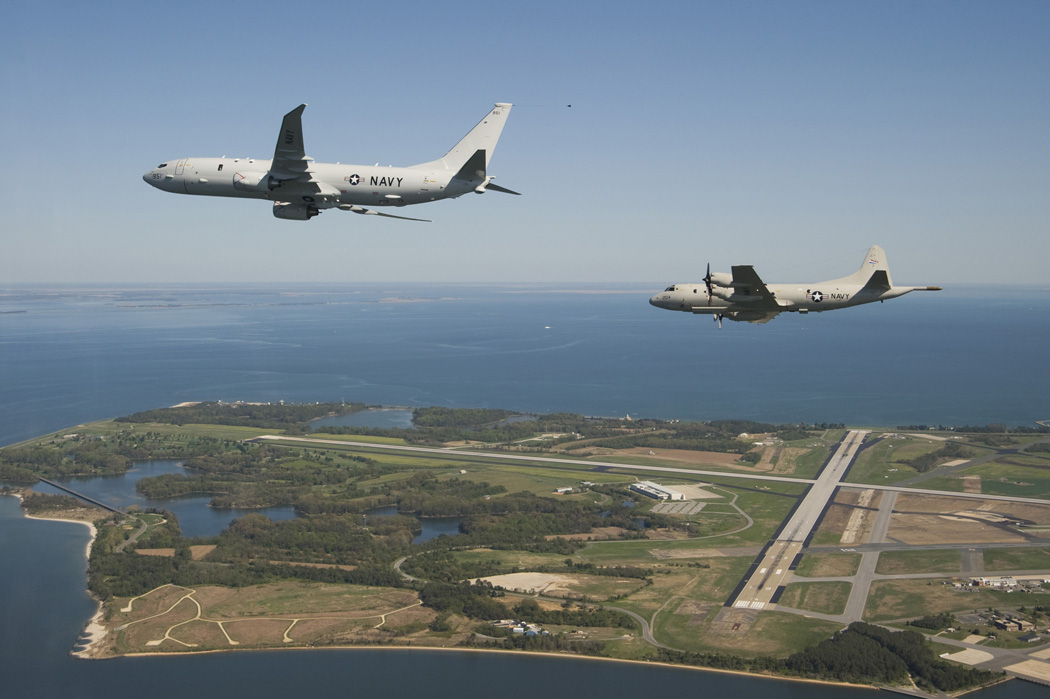|
VP-10
Patrol Squadron 10 (VP-10) is a United States Navy Patrol Squadron based at Naval Air Station Jacksonville in Jacksonville, Florida, United States. It is nicknamed the "Red Lancers" and is equipped with the Boeing P-8A Poseidon. It is the third squadron to be designated VP-10. The first VP-10 was redesignated VP-2D15 on 21 September 1927 and the second VP-10 was redesignated VP-25 on 1 July 1939. History 1951-1990 *February – June 1954: VP-10 deployed to various locations in the Caribbean area during the Guatemala coup d'état and a tense revolutionary atmosphere in Central America. Detachments were located at Lajes Field, Azores, Roosevelt Roads Naval Station San Juan, Puerto Rico, NAS Guantanamo Bay, Cuba, and NAS Key West, Florida. *October 1954: VP-10 deployed to NAS Keflavik, Iceland. During the period of Icelandic patrols, the squadron was tasked with conversion from the P2V-5 to the newer P2V-5F, which necessitated sending crews to Burbank, California, to pick up the ... [...More Info...] [...Related Items...] OR: [Wikipedia] [Google] [Baidu] |
VPB-23
VPB-23 was a patrol bombing squadron of the U.S. Navy. The squadron was established as Patrol Squadron 10-S (VP-10S) on 1 July 1930, redesignated Patrol Squadron 10-F (VP-10F) on 17 July 1933, redesignated Patrol Squadron 10 (VP-10) on 1 October 1937, redesignated Patrol Squadron 25 (VP-25) on 1 July 1939, redesignated Patrol Squadron 23 (VP-23) on 1 August 1941, redesignated Patrol Bombing Squadron 23 (VPB-23) on 1 October 1944 and disestablished on 25 January 1946. Operational history *1 July 1930: Torpedo Squadron NINE-S ( VT-9S) was redesignated at NAS Hampton Roads, Virginia, and the assets of the squadron were utilized to form Patrol Squadron 10S under the operational control of the Scouting Fleet. *1 September 1930: The squadron's twin-float T4M torpedo bombers were turned in for PM-1 flying boats. Tender support for the squadron's six PM-1 aircraft was provided by . *8 February 1931: VP-10S participated in Fleet Problem XII with VP-8, VP-3 and VP-5 in the Caribbean. S ... [...More Info...] [...Related Items...] OR: [Wikipedia] [Google] [Baidu] |
VPB-105
VPB-105 was a Patrol Bombing Squadron of the U.S. Navy. The squadron was established as Patrol Squadron 10 (VP-10) on 29 May 1924, redesignated Patrol Squadron 2D-15 (VP-2D15) on 21 September 1927, redesignated Patrol Squadron 2-S (VP-2S) on 1 July 1931, redesignated Patrol Squadron 2-F (VP-2F) on 17 July 1933, redesignated Patrol Squadron 2 (VP-2) on 1 October 1937, redesignated Patrol Squadron 31 (VP-31) on 1 July 1939, redesignated Bombing Squadron 105 (VB-105) on 15 May 1943, redesignated Patrol Bombing Squadron 105 (VPB-105) on 1 October 1944 and disestablished on 27 June 1945. Operational history *29 May 1924: Station aircraft supporting the Naval Base at Coco Solo, Panama Canal Zone, were designated by CNO as VP-10. The squadron consisted of six flying boats ( F-5Ls and H-16s). The new designation placed the squadron under the Naval Coast Defense Forces, Panama Canal Zone Region. *20 May 1925: VP-10 received new HS-2L flying boats to replace the World War I vintage F-5L a ... [...More Info...] [...Related Items...] OR: [Wikipedia] [Google] [Baidu] |
Patrol Squadron
This is a list of active United States Navy aircraft squadrons. ''Deactivated'' or ''disestablished'' squadrons are listed in the List of inactive United States Navy aircraft squadrons. Navy aircraft squadron (aviation), squadrons are composed of several aircraft (from as few as about four to as many as about a dozen), the officers who fly them, the officers and sailors who maintain them and administrative support officers and sailors. Some of the units listed in this article are not technically "squadrons", but they all operate U.S. Navy aircraft in some capacity. Squadrons and their history are listed in the ''Dictionary of American Naval Aviation Squadrons'' (DANAS). Squadron organization Active duty squadrons are typically Time commanded by a Commander (United States), commander. Second in command is the executive officer (XO), also a commander. The XO typically assumes command of the squadron after approximately 15 months. There are typically four functional departments – ... [...More Info...] [...Related Items...] OR: [Wikipedia] [Google] [Baidu] |
NAS Brunswick
Naval Air Station Brunswick , also known as NAS Brunswick, was a military airport located southeast of Brunswick, Maine, with a number of Navy-operated maritime patrol aircraft. As of November 28, 2009, the last aircraft ( P-3 Orions) left. The runways were permanently closed in January 2010. The base operated while the airport operated publicly under the name Brunswick Executive Airport until the base closed on May 31, 2011, as per the 2005 Base Realignment and Closure committee decision. Since then the base is known as Brunswick Landing. The Midcoast Regional Redevelopment Authority has been managing base redevelopment with high-tech business and industrial park. On April 2, 2011, the airport reopened as Brunswick Executive Airport. History The Brunswick airport was originally built in 1935 by the New Deal agency the Maine Emergency Relief Administration, a state division of the Federal Emergency Relief Administration after a survey of airports in the state by Capt. Harry M. ... [...More Info...] [...Related Items...] OR: [Wikipedia] [Google] [Baidu] |
VP-21 (1943-69)
VP-21 was a Patrol Squadron of the U.S. Navy. The squadron was established as Patrol Squadron 7-B (VP-7B) on 23 July 1929, redesignated Patrol Squadron 7-F (VP-7F) on 1 July 1931, redesignated Patrol Squadron 7 (VP-7) on 1 October 1937, redesignated Patrol Squadron 11 (VP-11) on 1 July 1939, redesignated Patrol Squadron 21 (VP-21) on 1 February 1941 and disestablished on 18 April 1942, with the squadron assets merged with VP-101. It was the third squadron to be designated VP-21, the first VP-21 was redesignated VP-45 on 1 July 1939 and the second VP-21 was redesignated VP-1 on 30 July 1940. Operational history *23 July 1929: Patrol Squadron 7-B was established at NAS San Diego, California, with six NB-1 floatplanes from the assets of the disestablished squadron VN-7D11. VP-7B came under the operational command of the Battle Fleet. Tender support was provided at that time by . PD-1 aircraft soon replaced the NB-1s. Training of flight crews continued through February 1930. *26 Ju ... [...More Info...] [...Related Items...] OR: [Wikipedia] [Google] [Baidu] |
Boeing P-8A Poseidon
The Boeing P-8 Poseidon is an American maritime patrol and reconnaissance aircraft developed and produced by Boeing Defense, Space & Security, and derived from the civilian Boeing 737-800. It was developed for the United States Navy (USN). The P-8 operates in the anti-submarine warfare (ASW), anti-surface warfare (ASUW), and intelligence, surveillance and reconnaissance (ISR) roles. It is armed with torpedoes, Harpoon anti-ship missiles, and other weapons, can drop and monitor sonobuoys, and can operate in conjunction with other assets, including the Northrop Grumman MQ-4C Triton maritime surveillance unmanned aerial vehicle (UAV). The P-8 is operated by the United States Navy, the Indian Navy, the Royal Australian Air Force, and the United Kingdom's Royal Air Force. It has also been ordered by the Royal Norwegian Air Force, the Royal New Zealand Air Force, the Republic of Korea Navy, and the German Navy. Development Origins The Lockheed P-3 Orion, a turboprop ASW aircraft, ... [...More Info...] [...Related Items...] OR: [Wikipedia] [Google] [Baidu] |
Naval Air Station Jacksonville
Naval Air Station Jacksonville (NAS Jacksonville) is a large naval air station located approximately eight miles (13 km) south of the central business district of Jacksonville, Florida, United States., effective 2007-10-25 Location NAS Jacksonville is located in Duval County, Florida, within the city limits of Jacksonville. The base sits on a piece of land between the St. Johns River and Ortega River historically called Black Point. The airbase is part of the overall Jacksonville Naval Complex, a collection of Navy Bases in the Jacksonville Metropolitan Area that include Naval Station Mayport, the former Naval Air Station Cecil Field (now Cecil Airport), Naval Outlying Landing Field Whitehouse, and the Pinecastle Range Complex. It also neighbors a small ghost town called Yukon. History During World War I, the area now occupied by NAS Jacksonville, often referred to colloquially as "NAS Jax", was named ''Camp Joseph E. Johnston'', and was commissioned on October 15, 191 ... [...More Info...] [...Related Items...] OR: [Wikipedia] [Google] [Baidu] |
Boeing P-8 Poseidon
The Boeing P-8 Poseidon is an American maritime patrol and reconnaissance aircraft developed and produced by Boeing Defense, Space & Security, and derived from the civilian Boeing 737-800. It was developed for the United States Navy (USN). The P-8 operates in the anti-submarine warfare (ASW), anti-surface warfare (ASUW), and intelligence, surveillance and reconnaissance (ISR) roles. It is armed with torpedoes, Harpoon anti-ship missiles, and other weapons, can drop and monitor sonobuoys, and can operate in conjunction with other assets, including the Northrop Grumman MQ-4C Triton maritime surveillance unmanned aerial vehicle (UAV). The P-8 is operated by the United States Navy, the Indian Navy, the Royal Australian Air Force, and the United Kingdom's Royal Air Force. It has also been ordered by the Royal Norwegian Air Force, the Royal New Zealand Air Force, the Republic of Korea Navy, and the German Navy. Development Origins The Lockheed P-3 Orion, a turboprop ASW a ... [...More Info...] [...Related Items...] OR: [Wikipedia] [Google] [Baidu] |
Jacksonville Naval Air Station
Naval Air Station Jacksonville (NAS Jacksonville) is a large naval air station located approximately eight miles (13 km) south of the central business district of Jacksonville, Florida, United States., effective 2007-10-25 Location NAS Jacksonville is located in Duval County, Florida, within the city limits of Jacksonville. The base sits on a piece of land between the St. Johns River and Ortega River historically called Black Point. The airbase is part of the overall Jacksonville Naval Complex, a collection of Navy Bases in the Jacksonville Metropolitan Area that include Naval Station Mayport, the former Naval Air Station Cecil Field (now Cecil Airport), Naval Outlying Landing Field Whitehouse, and the Pinecastle Range Complex. It also neighbors a small ghost town called Yukon. History During World War I, the area now occupied by NAS Jacksonville, often referred to colloquially as "NAS Jax", was named ''Camp Joseph E. Johnston'', and was commissioned on October 15, 1917 ... [...More Info...] [...Related Items...] OR: [Wikipedia] [Google] [Baidu] |
Amílcar Cabral International Airport
Amílcar Cabral International Airport , also known as Sal International Airport, is the main international airport of Cape Verde. The airport is named after the revolutionary leader Amílcar Cabral. It is located two km west-southwest from Espargos on Sal Island. Sal is the main hub for the national airline, Cabo Verde Airlines; and serves as a base for carrier Cabo Verde Express. This airport was also one of NASA's locations for a facility to handle the Space Shuttle after reentering from orbit. History The first airport on Sal Island was built in 1939 by Italy, as a fuel and provisions stopping-point on routes from Europe to South America. The first flight, an arrival from Rome and Seville, was on 15 December 1939. As a consequence of World War II, the Italian involvement in the airport project ceased. After World War II, the Portuguese colonial government purchased the airport from Italy and by 1949 the airport was a fully operational. In 1950, DC-4 service on Alitalia be ... [...More Info...] [...Related Items...] OR: [Wikipedia] [Google] [Baidu] |
Cape Verde
, national_anthem = () , official_languages = Portuguese , national_languages = Cape Verdean Creole , capital = Praia , coordinates = , largest_city = capital , demonym = Cape Verdean or Cabo Verdean , ethnic_groups_year = 2017 , government_type = Unitary semi-presidential republic , leader_title1 = President , leader_name1 = José Maria Neves , leader_title2 = Prime Minister , leader_name2 = Ulisses Correia e Silva , legislature = National Assembly , area_rank = 166th , area_km2 = 4033 , area_sq_mi = 1,557 , percent_water = negligible , population_census = 561,901 , population_census_rank = 172nd , population_census_year = 2021 , population_density_km2 = 123.7 , population_density_sq_mi = 325.0 , population_density_rank = 89th , GDP_PPP ... [...More Info...] [...Related Items...] OR: [Wikipedia] [Google] [Baidu] |
Cuban Missile Crisis
The Cuban Missile Crisis, also known as the October Crisis (of 1962) ( es, Crisis de Octubre) in Cuba, the Caribbean Crisis () in Russia, or the Missile Scare, was a 35-day (16 October – 20 November 1962) confrontation between the United States and the Soviet Union, which escalated into an international crisis when American deployments of missiles in Italy and Turkey were matched by Soviet deployments of similar ballistic missiles in Cuba. Despite the short time frame, the Cuban Missile Crisis remains a defining moment in national security and nuclear war preparation. The confrontation is often considered the closest the Cold War came to escalating into a full-scale nuclear war. In response to the presence of American Jupiter ballistic missiles in Italy and Turkey, the failed Bay of Pigs Invasion of 1961, and Soviet fears of a Cuban drift towards China, Soviet First Secretary Nikita Khrushchev agreed to Cuba's request to place nuclear missiles on the island t ... [...More Info...] [...Related Items...] OR: [Wikipedia] [Google] [Baidu] |




.jpg)

.jpg)